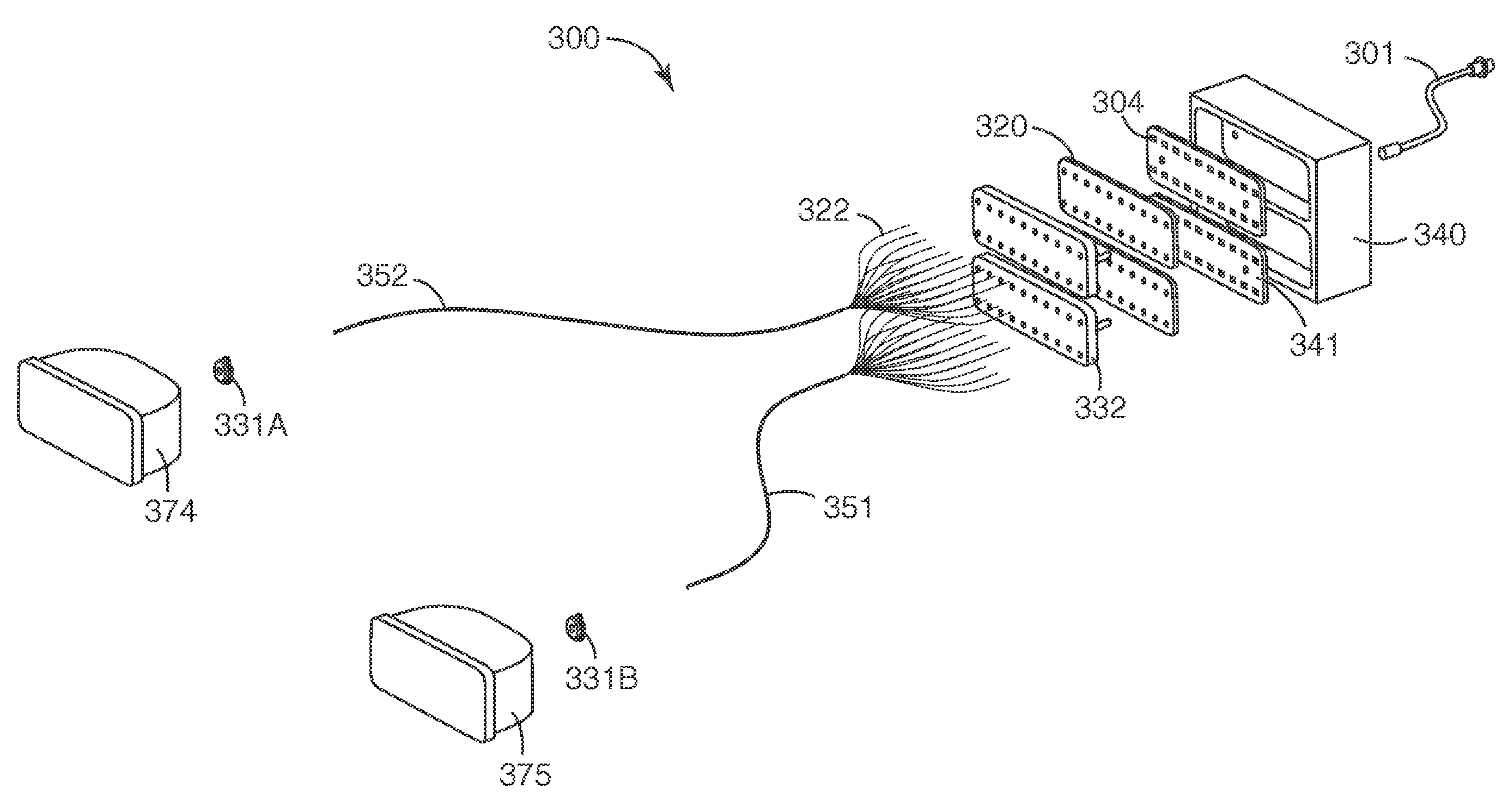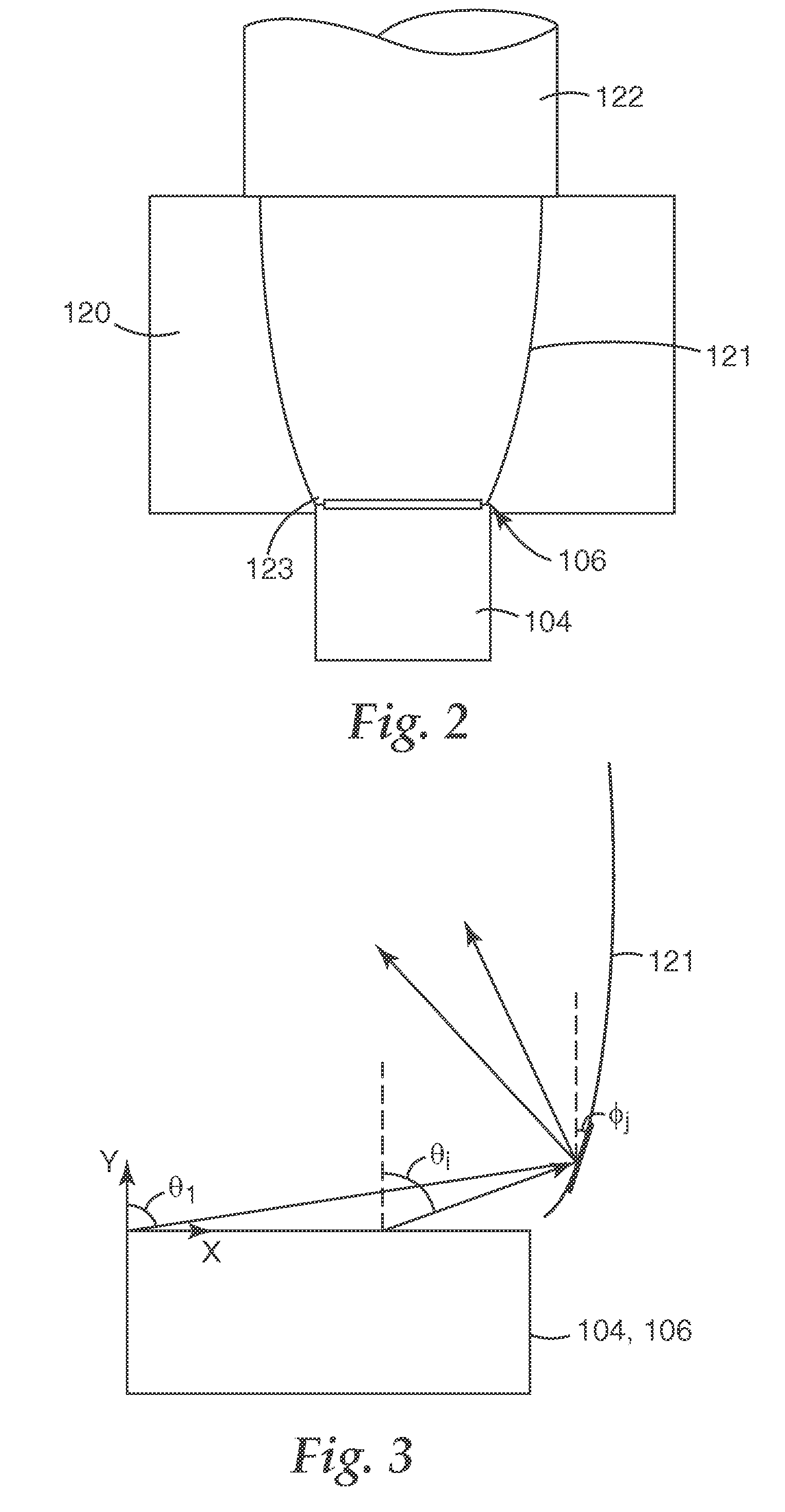Illumination system using a plurality of light sources
a light source and illumination system technology, applied in vehicle headlamps, dentistry, treatment rooms, etc., can solve the problems of reducing the amount of light needed for bright lighting applications, and reducing the efficiency of lighting
- Summary
- Abstract
- Description
- Claims
- Application Information
AI Technical Summary
Benefits of technology
Problems solved by technology
Method used
Image
Examples
Embodiment Construction
[0037] Generally, previous optical fiber lighting designs suffered from high coupling losses and were therefore very inefficient. An illumination system in accordance with the present invention provides for substantially higher light coupling efficiency. Furthermore, the illumination system of the present invention offers an incoherent light output that can appear to the human observer as arising from a single point of light. In addition, exemplary embodiments of the present invention show that an array of LED dies can be utilized to provide a high density, remote source of light that can be output at one or more locations. Moreover, exemplary embodiments of the present invention provide an array of LED dies that can be utilized to provide a high density, remote source of light that can produce one color, or multiple colors, either individually, or simultaneously, at one or more locations. In addition, the colors or color combinations of the source may be made changeable to suit par...
PUM
 Login to View More
Login to View More Abstract
Description
Claims
Application Information
 Login to View More
Login to View More - R&D
- Intellectual Property
- Life Sciences
- Materials
- Tech Scout
- Unparalleled Data Quality
- Higher Quality Content
- 60% Fewer Hallucinations
Browse by: Latest US Patents, China's latest patents, Technical Efficacy Thesaurus, Application Domain, Technology Topic, Popular Technical Reports.
© 2025 PatSnap. All rights reserved.Legal|Privacy policy|Modern Slavery Act Transparency Statement|Sitemap|About US| Contact US: help@patsnap.com



